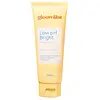What's inside
What's inside
 Key Ingredients
Key Ingredients

 Benefits
Benefits

 Concerns
Concerns

 Ingredients Side-by-side
Ingredients Side-by-side

Water
Skin ConditioningCocamidopropyl Betaine
CleansingGlycerin
HumectantPotassium Cocoyl Glycinate
Acrylates Copolymer
Niacinamide
SmoothingPEG-150 Distearate
EmulsifyingPotassium Cocoate
EmulsifyingTriethanolamine
BufferingCentella Asiatica Extract
CleansingPropylene Glycol
HumectantCamellia Sinensis Leaf Extract
AntimicrobialStearic Acid
Cleansing1,2-Hexanediol
Skin ConditioningCitric Acid
BufferingParfum
MaskingPhenoxyethanol
PreservativePotassium Sorbate
PreservativeSodium Benzoate
MaskingWater, Cocamidopropyl Betaine, Glycerin, Potassium Cocoyl Glycinate, Acrylates Copolymer, Niacinamide, PEG-150 Distearate, Potassium Cocoate, Triethanolamine, Centella Asiatica Extract, Propylene Glycol, Camellia Sinensis Leaf Extract, Stearic Acid, 1,2-Hexanediol, Citric Acid, Parfum, Phenoxyethanol, Potassium Sorbate, Sodium Benzoate
Water
Skin ConditioningSodium Lauroyl Glutamate
Panthenol
Skin ConditioningSodium Lauroyl Sarcosinate
CleansingAcrylates/C10-30 Alkyl Acrylate Crosspolymer
Emulsion StabilisingSodium Cocoyl Apple Amino Acids
Skin Conditioning1,2-Hexanediol
Skin ConditioningHydroxyacetophenone
AntioxidantCitric Acid
BufferingHexylene Glycol
EmulsifyingAllantoin
Skin ConditioningCentella Asiatica Leaf Extract
Skin ConditioningTremella Fuciformis Extract
HumectantSodium Hyaluronate
HumectantCetyl Alcohol
EmollientStyrene/Acrylates Copolymer
Tetrasodium Glutamate Diacetate
Water, Sodium Lauroyl Glutamate, Panthenol, Sodium Lauroyl Sarcosinate, Acrylates/C10-30 Alkyl Acrylate Crosspolymer, Sodium Cocoyl Apple Amino Acids, 1,2-Hexanediol, Hydroxyacetophenone, Citric Acid, Hexylene Glycol, Allantoin, Centella Asiatica Leaf Extract, Tremella Fuciformis Extract, Sodium Hyaluronate, Cetyl Alcohol, Styrene/Acrylates Copolymer, Tetrasodium Glutamate Diacetate
 Reviews
Reviews

Ingredients Explained
These ingredients are found in both products.
Ingredients higher up in an ingredient list are typically present in a larger amount.
1,2-Hexanediol is a synthetic liquid and another multi-functional powerhouse.
It is a:
- Humectant, drawing moisture into the skin
- Emollient, helping to soften skin
- Solvent, dispersing and stabilizing formulas
- Preservative booster, enhancing the antimicrobial activity of other preservatives
Citric Acid is an alpha hydroxy acid (AHA) naturally found in citrus fruits like oranges, lemons, and limes.
Like other AHAs, citric acid can exfoliate skin by breaking down the bonds that hold dead skin cells together. This helps reveal smoother and brighter skin underneath.
However, this exfoliating effect only happens at high concentrations (20%) which can be hard to find in cosmetic products.
Due to this, citric acid is usually included in small amounts as a pH adjuster. This helps keep products slightly more acidic and compatible with skin's natural pH.
In skincare formulas, citric acid can:
While it can provide some skin benefits, research shows lactic acid and glycolic acid are generally more effective and less irritating exfoliants.
Most citric acid used in skincare today is made by fermenting sugars (usually from molasses). This synthetic version is identical to the natural citrus form but easier to stabilize and use in formulations.
Read more about some other popular AHA's here:
Learn more about Citric AcidWater. It's the most common cosmetic ingredient of all. You'll usually see it at the top of ingredient lists, meaning that it makes up the largest part of the product.
So why is it so popular? Water most often acts as a solvent - this means that it helps dissolve other ingredients into the formulation.
You'll also recognize water as that liquid we all need to stay alive. If you see this, drink a glass of water. Stay hydrated!
Learn more about Water